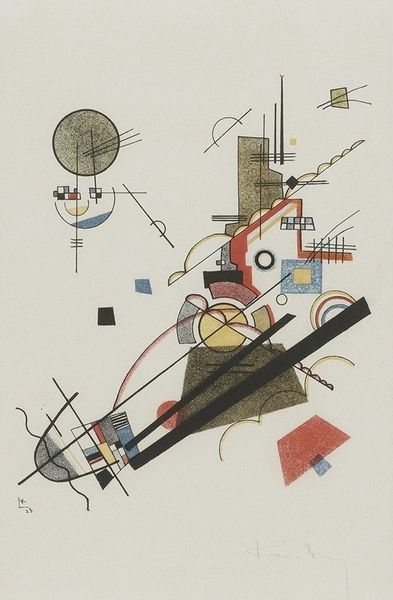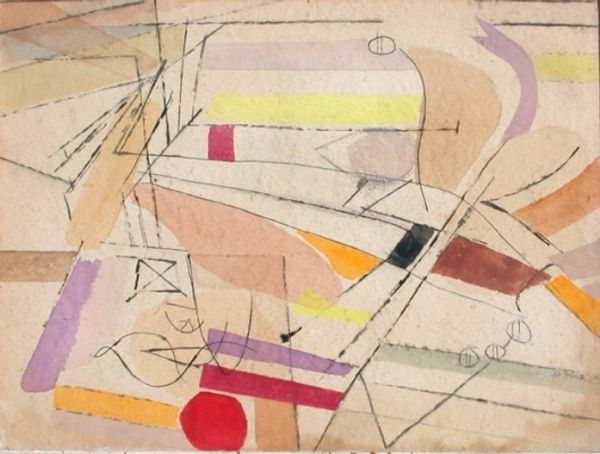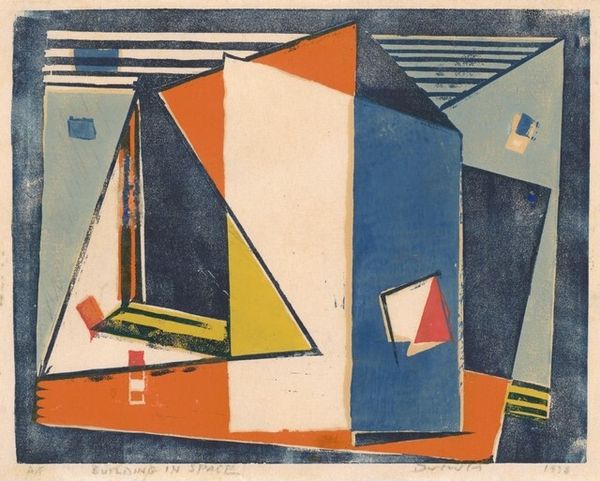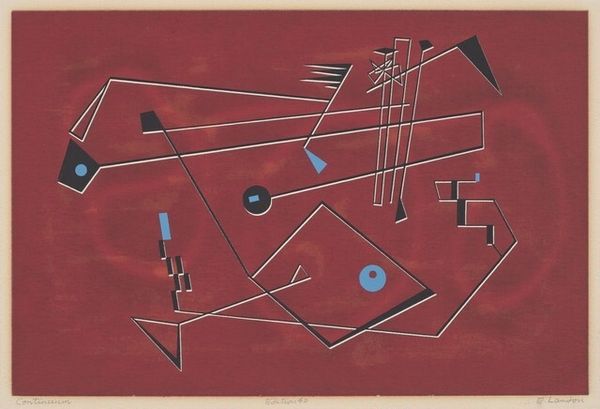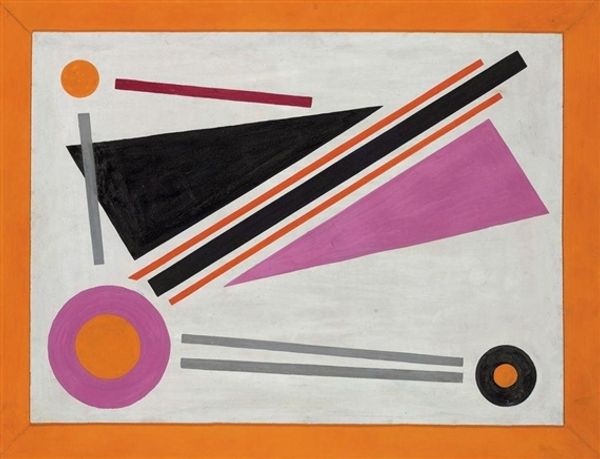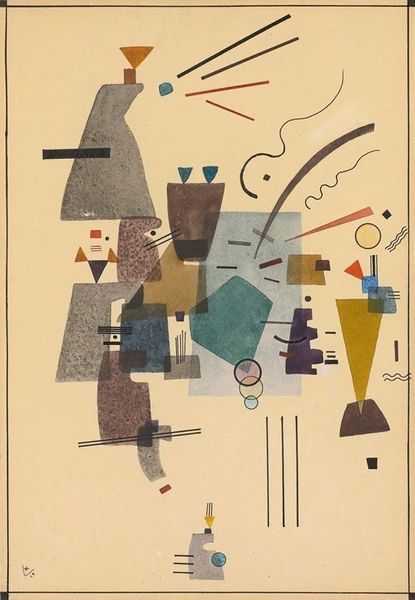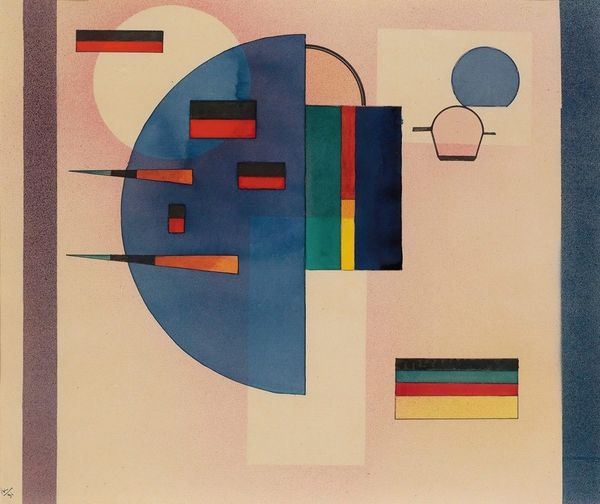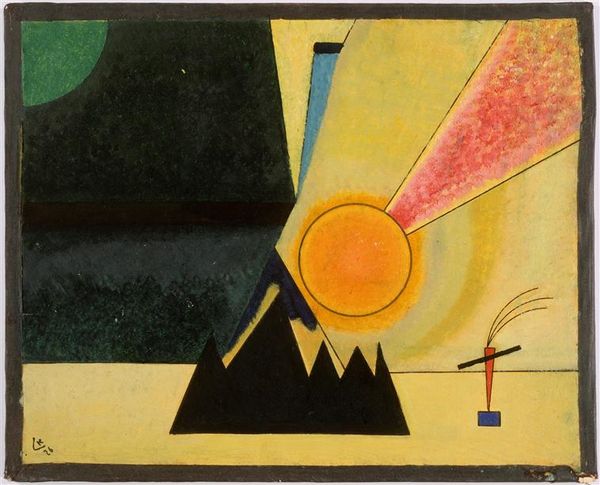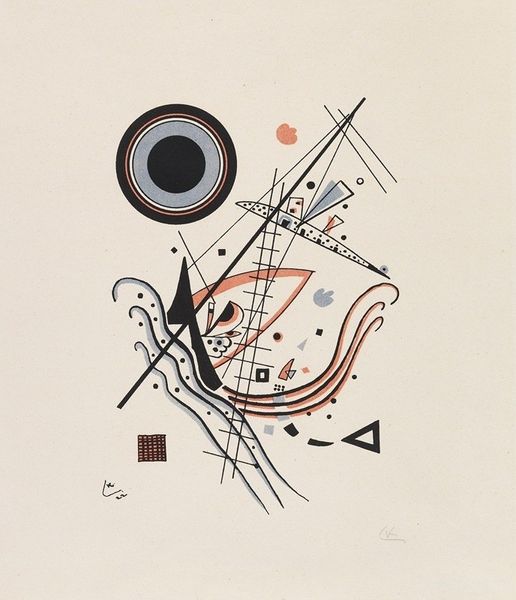
watercolor
#
water colours
#
abstract
#
watercolor
#
expressionism
#
geometric-abstraction
#
bauhaus
#
watercolor
Copyright: Public Domain: Artvee
Curator: This watercolor piece is "Schweben," which translates to "Floating," created by Wassily Kandinsky in 1924. Editor: It certainly has that sense of lightness. The crisp lines and simple geometric shapes hovering on the paper are like musical notes on a staff, don't you think? Curator: Kandinsky was deeply interested in the spiritual in art and aimed to evoke emotional and sensory experiences. This piece was created during his Bauhaus period, a time of exploration in geometric abstraction. We need to consider the utopian vision that drove the Bauhaus movement; their drive toward social reform through the unification of art, craft, and technology, becomes very clear. Editor: Yes, the interplay of the circles, triangles, and squares is certainly balanced, yet I detect a hint of discordance too. Note how Kandinsky employs a limited palette—primary colors softened with earth tones, and varying the intensity and hue. The composition has depth, and it directs the viewer's eye. The overall affect is serene and contemplative but with subtle unrest. Curator: I see "Schweben" reflecting the cultural and political climate of the Weimar Republic; it was a time of great experimentation, yes, but also economic hardship and political instability. Does this arrangement of geometric forms express that moment’s inherent tension between progress and fragility? Look at the influence of Suprematism and Constructivism, the efforts to visualize and actualize the revolution of thought occurring in Europe at the time. Editor: The linear construction, the way he’s created relationships among the geometric forms: it transcends social commentary; it is concerned with relationships intrinsic to visual construction. See how each form interacts with negative space—demanding our attention. Curator: Thinking about Kandinsky’s biography as a Russian émigré in Germany helps us connect with his broader narrative as an artist working in exile. Editor: Whatever drove the selection and arrangement of those particular shapes and hues, the result is visually intriguing. It really rewards the close looking. Curator: Ultimately, it is the convergence of his personal history, art theory, and social context that helps me appreciate Kandinsky's enduring impact and innovation. Editor: It does for me as well, although, what resonates is that balanced, harmonic, pictorial organization, its sense of completion.
Comments
No comments
Be the first to comment and join the conversation on the ultimate creative platform.
